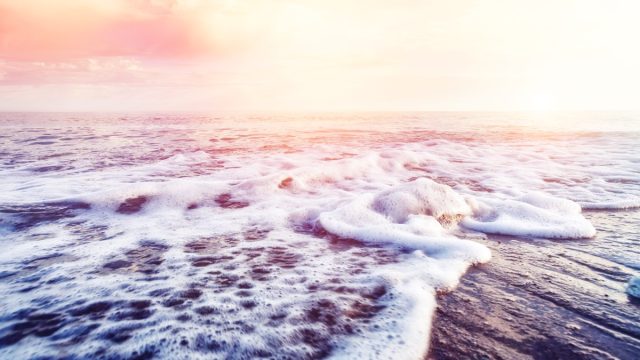This Is Why the Ocean Is Filled with Salt

It probably seems kind of strange that some bodies of water on Earth are salty and others are not. They’re all are fed by the same fresh rainwater, after all, and all follow a similar cycle of evaporation, condensation, and precipitation. So why is there a difference? Why are oceans salty and lakes, rivers, and reservoirs not?
Well, the short answer is: You’re looking at it wrong. Oceans are salty not because of what falls from the sky but from what’s already on land.
Sure, it might seem counterintuitive, but the ocean’s saltiness is actually the result of a chain reaction that took place over hundreds of millions of years. Yes, the ocean didn’t actually used to be so salty. Over eons, rain fell to Earth, and, since it’s slightly acidic—due to traces of dissolved carbon dioxide it picks up from the air—it erodes rocks over time, dissolving some of the minerals as it goes.
These ions (that’s what dissolved minerals are called when they have a positive or negative charge) are then washed into rivers and streams, which feed into the oceans. Organisms in the ocean use some of these ions, removing them from the water. Others are left in the ocean where they build up over time—in particular, chloride and sodium, which together create a salty solution.
Just how much salt flows into the oceans?
According to the National Oceanic and Atmospheric Administration, rivers and streams flowing from the United States alone discharge 225 million tons of dissolved solids and 513 million tons of suspended sediment to the ocean every year. Globally, rivers carry an estimated 4 billion tons of dissolved salts into the ocean.
Rivers aren’t the only source of salt in the oceans. Areas on the ocean floor known as hydrothermal vents are places where sea water seeps into the rocks of the oceanic crust, dissolving minerals and flowing back into the ocean. Eruptions by underwater volcanoes can also contribute, as sea water reacts to the hot rock and dissolves some of the minerals in the process.
Since rivers and streams carry the sediment to the ocean and are then replenished with rain, they don’t get salty, while the ocean, which continues to collect the salt from the rivers flowing into it. In fact, “fresh” water has some of the same salty minerals as salt water, but in such low concentrations that you don’t really taste it.
On the other hand, bodies of water such as the Great Salt Lake and the Dead Sea are salty because they have no outlets, so all the water that pours into them escape only by evaporation, leaving salty minerals behind.
Considering that oceans cover 70 percent of the Earth and 97 percent of all the water on the planet is saline, there is a lot of salt in the oceans (especially considering that salt has had 200 to 300 million years to build up). According to the U.S. Geological Survey, “if the salt in the ocean could be removed and spread evenly over the Earth’s land surface it would form a layer more than 500 feet (166 meters) thick, about the height of a 40-story office building.” And now you know how it all got there. And for more fascinating insight on the big blue sea, here are 30 Reasons Why the Ocean Is Scarier Than Space.
To discover more amazing secrets about living your best life, click here to follow us on Instagram!